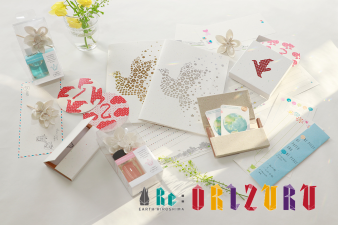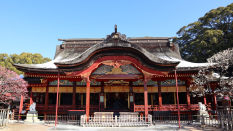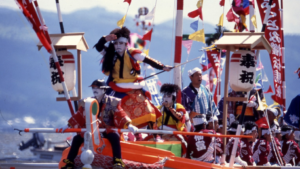Hiroshima Peace Memorial Museum: A Global Desire for Peace
The Nobel Peace Prize for 2024 to the Japanese organization Nihon Hidankyo.
In response to the atomic bomb attacks of August 1945, a global movement arose whose members have worked tirelessly to raise awareness about the catastrophic humanitarian consequences of using nuclear weapons. Gradually, a powerful international norm developed, stigmatizing the use of nuclear weapons as morally unacceptable. This norm has become known as “the nuclear taboo”. The testimony of the Hibakusha – the survivors of Hiroshima and Nagasaki – is unique in this larger context. --- Oslo, 11 October 2024 (Source: The Nobel Prize)
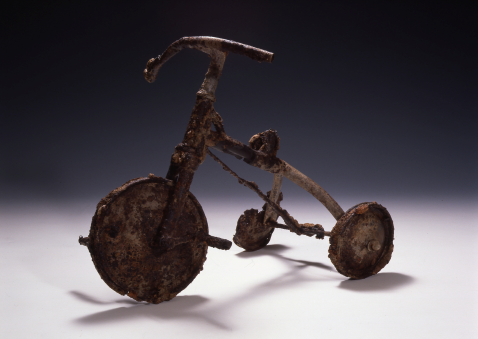
(寄贈/銕谷信男、所蔵/広島平和記念資料館)
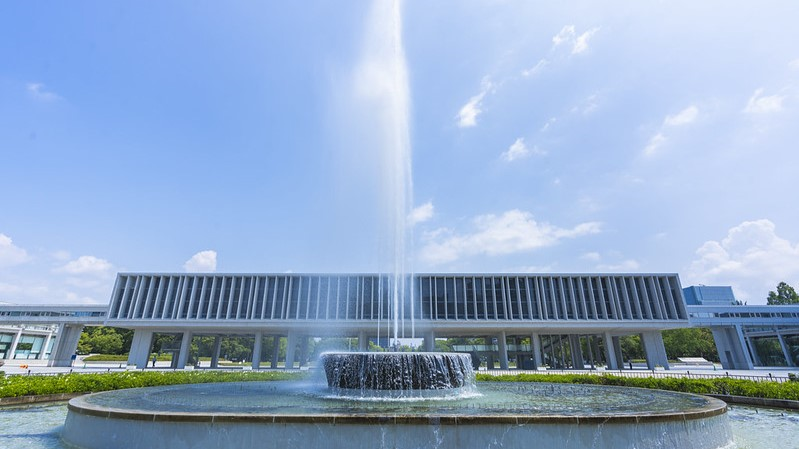

広島県産業奨励館(原爆ドーム)と爆心地付近(撮影/米軍、提供/広島平和記念資料館)
Several stories have been documented to express people's sincere search for peace.
Sadako's 4,675 Days of Life
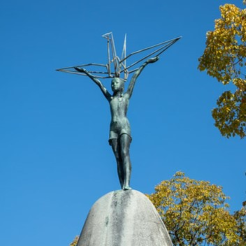
(@ Hiroshima Tourism Association)
Sadako Sasaki was born in 1943 and was a mere 2 years old when the bomb dropped. She was healthy and athletically gifted growing up, but ten years after the bombing, she was hospitalized suddenly. The diagnosis was leukemia. One day, a thousand paper cranes arrived at the hospital, and she received some of them as a get-well gift. This inspired her to begin folding her own thinking, "I want to live." However, after spending eight months in hospital, she finally succumbed to her illness and died surrounded by her family. (Source: Hiroshima Peace Memorial Museum)
Sadako’s elderly brother, Masahiro reached out and built a friendship with Clifton Truman Daniel, a grandson of US President Truman, who authorized the A-Bomb attack on Hiroshima and Nagasaki. In 2010, Masahiro met with Daniel for the first time. 2 years later, Daniel visited Hiroshima and Nagasaki concerned by the criticism he expected to receive from bomb-A survivors. However, he faced their strong message of seeking world peace without any request for an apology. Masahiro donated a small paper crane made by Sadako to Daniel as a symbol of peace. Masahiro said: “I donated the crane in the hope that emotional conflicts between Japan and the United States will come to an end. I have not felt hatred for the United States and I think Sadako felt the same.” In 2024, the New York State Museum announced that Sadako’s Crane exhibit was on display in the World Trade Center Gallery.
Barefoot Gen, Hadashi no Gen
The Barefoot Gen realistically depicts the horrors of the atomic bomb and explores themes of the tragedy of war and the hope for life, based on Nakazawa Keiji's experiences as a survivor of the Hiroshima atomic bombing. The series began in 1945 and total number of copies sold was over 10 million globally. Nakazawa did not want to portray this work as an anti-war manga, but rather, he wanted to portray it as a story with the theme of ‘human love’ as the main theme, with the meaning of affirming ‘living’ in it, ‘become wheat that sprouts strong buds even when stepped on.’
Memories of the Fallen: A Journey Beyond Nations
The 80th anniversary memorial service was held on May 5th, 2024 at Ryujin village in Wakayama prefecture for eleven B29 fighters. One B29 crashed following aerial combat in 1945. 7 crew members died immediately, one of the crew passed away later from his injuries and the remaining 3 were taken prisoner and then executed. Ryujin villagers gathered and buried their bodies, making their graves with a makeshift cross. It was two months before the end of WW2. Every year since then, villagers have held memorial services out of respect. At the 70th anniversary ceremony, the US Navy’s band played the memorial music, sang both nation’s anthem, and expressed their sincere gratitude to Ryujin villagers.
Another story is about Kiska Island in Alaska. In the Aleutian Islands, Attu was where the entire Japanese army perished, while Kiska became known for its miraculous "withdrawal." When the Japanese army withdrew before an all-out American assault, Japanese soldiers buried the US pilot’s bodies with a message; Sleeping here, a brave air hero Who lost youth and happiness for his Mother land July 25, Nippon army.
There are probably many similar stories abroad, but it's a shame that we don't know much about them.
Recycled Origami Crane
Every year, around 10 million paper cranes are sent to Hiroshima from people all over Japan and the world who have been moved by Sadako's story. Many recycled paper goods such as notebooks, calendars, postcards, etc. are made from recycled paper using these paper cranes. (Source: Re:ORIZURU)
Recommendations to visit
Hiroshima Peace Memorial Museum
- Access: About 20 min. from the south exit of JR Hiroshima Station on No.24 Hiroshima Bus bound for Yoshijima. Get off at "Heiwa kinen koen"
Nagasaki Atomic Bomb Museum
- Access: About 18 min. from JR Nagasaki Station on the tram, "Akasako" line. Get off at the "Atomic Bomb Museum" stop. Then a 5-min. walk

